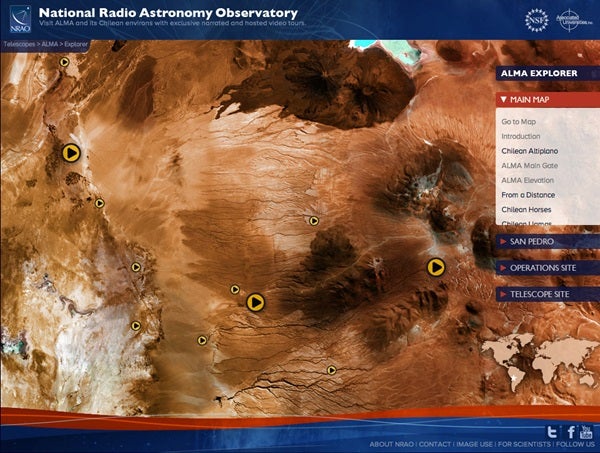The ALMA Explorer website allows visitors to select a stop they wish to visit, from Chilean sights to behind-the-scenes peeks into ALMA construction and operations, and learn all there is to know about this awesome telescope array.
NRAO/AUI/NSF
Just because you don’t have a lot of cash to throw at a plane ticket to Santiago, Chile, doesn’t mean you can’t visit the Atacama Large Millimeter/submillimeter Array (ALMA). The scientists, engineers, and outreach specialists at the National Radio Astronomy Observatory collaborated to take you on a better tour than you would get if you showed up at the 3-mile-high (5,000 meters) telescope site. Through the ALMA Explorer, you can hop from landmark to landmark and learn about everything from the gross amount of fiber cable, to the graded highway, to the high site to the antennas’ flexible movement. So take a trip to Chile, but stay right there in your ergonomic office chair.
As a bonus, here are some high-altitude fast stats:
For every 1,000 feet (305m) of elevation climbed, a vehicle loses around 3 percent of its horsepower due the reduction in air pressure. By 10,000 feet (3,050m), the air is becoming too thin to properly support the read/write head above a spinning hard drive. At the array site of 16,500 feet (5,030m), the average altitude of Tibet, the air pressure is half what it is at sea level; visitors with even moderately high blood pressure are at risk of a heart attack and are medically forbidden the trek.










